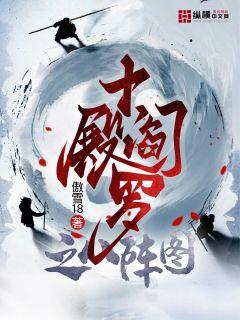
文章摘要:韩国足球蓬勃发展,但也面临挑战。首先,韩国足球取得了国际赛事的辉煌战绩,但仍需应对实力不断提升的对手;其次,基层足球发展良好,但职业联赛仍需提升水平;再者,韩国足球管理体系正不断优化,但仍存在着一些问题;最后,足球文化深入人心,但也需更多投入和关注。总体来说,韩国足球在蓬勃发展的同时,需面对诸多挑战,需要持续努力和改进。
韩国国家队取得了令人瞩目的成绩,包括世界杯表现和亚洲杯冠军
但近年来,韩国在国际赛事中遇到了不少挑战,犹如竞争日益激烈
国家队需要不断提升实力,以迎接更大的挑战
韩国的青少年足球培训体系日臻完善,各级别联赛活跃
但职业联赛水平与世界先进水平尚有差距,需要更多支持
基层足球是韩国足球未来发展的重要基础
韩国足协不断完善管理体系,提升赛事组织水平
但仍存在一些问题,如转会政策、年轻球员培养等方面有待改进
管理体系优化对整个韩国足球的提升具有重要意义
韩国足球文化深入人心,比赛氛围热烈,球迷热情
但足球文化的传承需要更多的投入和关注,尤其是对年轻一代的教育
足球文化是韩国足球持续发展的精神支柱
总结:
韩国足球正处于蓬勃发展的阶段,取得了不少成就,但也面临着诸多挑战。
需要全社会共同努力,推动韩国足球走向更辉煌的未来。
文章摘要的内容:本文通过分析12雷霆球员所展现的团队精神,深入探讨了雷霆新时代在集体力量方面的表现。从领袖力量、默契配合、逆境应对和文化建设四个方面展开讨论,揭示了这支球队如何在团结协作中迈向成功,为读者呈现了一幅生动的篮球团队精神画卷。
雷霆队的成功不仅仅依赖于个别球员的天赋,更在于他们独特的领袖力量。Durant、Westbrook和Harden的共同努力,为球队奠定了稳固的基础。这些领袖不仅在场上展现出色,还在场外通过言行激励队友,塑造了团队凝聚力。
随着时间的推移,雷霆的领袖轮替带来了新的挑战。Paul George和Russell Westbrook的默契合作,展示了新一代领袖的力量,他们在协调球队战术方面发挥了关键作用。
雷霆队的领袖力量不仅仅是个别球员的表现,更体现在他们如何带领整个团队走向胜利,成为一支无可阻挡的力量。
团队的默契配合是雷霆队成功的关键因素之一。在比赛中,球员们的默契配合能够在关键时刻取得胜利。例如,在关键比赛中Durant和Westbrook的默契传球,以及Adams在篮下的出色防守,展示了他们的团队配合能力。
雷霆队通过训练和比赛的实践,不断提升球员之间的默契度。他们通过分析比赛录像、模拟战术演练等方式,增强球员们的理解和协作能力,使得在场上的默契配合更加紧密。
这种默契不仅仅体现在进攻端,还在防守端展现出色。雷霆队的每一个球员都清楚自己在战术中的角色,他们的相互信任和配合,使得球队能够在各种复杂情况下保持稳定和高效。
雷霆队在面对逆境时展现了出色的团队精神。无论是关键球员的伤病或者比赛中的失利,他们总能在团结一致的支持下迅速调整,重新找到胜利的路径。
例如,在一场季后赛中,雷霆队面对0-2落后的局面,通过团队的紧密合作和领袖的激励,最终逆转了比赛局势,取得了关键的胜利。这种逆境中的应对能力,体现了他们团队精神的强大。
雷霆队通过逆境的挑战,不断锤炼团队的意志和凝聚力,使得他们在困难面前更显坚定和无畏。
雷霆队注重的不仅仅是赛场上的表现,还有文化建设方面的努力。他们通过建立积极向上的团队文化,使得每一个球员都能在这种文化氛围中茁壮成长。
从管理层到球员,雷霆队都鼓励积极的沟通和合作精神。他们通过组织各种团队活动、社区服务等方式,培养球员的集体荣誉感和责任感。
雷霆队的文化建设不仅仅是团队内部的凝聚力,还影响到整个城市和球迷群体。他们通过积极参与社会活动和公益事业,树立了一个积极向上的形象。
总结:
雷霆队展示了令人瞩目的团队精神,通过领袖力量的传承、默契配合的精准、逆境中的坚韧和文化建设的深化,他们不仅在球场上取得了成功,更在精神层面上树立了榜样。这种团队精神不仅影响了球员个人的成长,也深刻影响了整个社区和球迷群体,展示了雷霆队新时代的集体力量。
雷霆队的成功不仅来自于个别球员的出色表现,更因为他们在团队合作和精神凝聚方面的持续努力,为篮球运动注入了新的活力和意义。
### 文章摘要
《斯托:重返荣耀的足球征程》讲述了前巴西国家队球星路易斯·费利佩·斯科拉里(斯托)在经历低谷后重返足球高峰的故事。通过其与球队的磨合、对手的挑战以及个人成长,揭示了一个人如何在逆境中重拾信心,赢得尊重,并再次追求荣耀的典范。
### 1、斯托的复出之路
斯托,一位曾经的巴西国家队核心,在职业生涯低谷后选择重返足球赛场。他面临着年龄、体能等多重挑战,但通过不懈的努力和专注,重新找回了竞技状态。
在重新融入球队的过程中,斯托面临着如何与年轻球员合作、恢复比赛节奏等问题。然而,他的经验和领导能力逐渐在球队中彰显,成为了队伍不可或缺的一部分。
随着比赛的进行,斯托不断证明自己的价值,通过实际行动回应了所有怀疑和质疑,最终重新赢得了球迷和媒体的认可。
### 2、球队重建与战术调整
球队在斯托回归后不仅仅是一个个体的表现,而是整体战术的重新调整。教练组根据斯托的加入重新审视阵容,并调整战术以更好地发挥他的优势。
通过与斯托的沟通和理解,球队开始形成新的战术风格,更加注重控球和进攻节奏的稳定性。这种调整不仅仅提高了球队的比赛效率,也增强了球员们的信心。
斯托在战术调整中的角色不仅仅是执行者,更是战术理念的传播者和实施者,他的存在使得整支球队更加有序和有效率。
### 3、对手的挑战与应对策略
斯托回归后,面对的不仅仅是球场上的竞争,还有对手对他个人的分析和防守策略。各支对手开始研究他的比赛习惯和技术特点,试图找到对付他的有效方法。
为了应对对手的挑战,斯托不断在训练中调整自己的技术细节和比赛策略。他与教练组紧密合作,寻找突破对手防线的新方法,并在比赛中不断实验和调整。
通过与对手的较量,斯托不仅提升了个人的比赛水平,还帮助球队在关键时刻找到了突破对手的有效战术。
### 4、个人成长与团队荣耀的共赢
斯托的重返荣耀之路不仅仅是个人的成功,更是整支球队共同追求荣耀的结果。在他的带领下,球队形成了一种共同进步和合作的文化氛围。
个人的成长与团队的荣耀在这条足球征程上相辅相成,斯托通过自己的表现和领导影响力,将团队带向了一个新的高度。
通过这段经历,斯托不仅重塑了自己的足球生涯,也为年轻球员树立了一个榜样和目标,展示了一个真正的领袖应有的品质。
### 总结:
斯托:重返荣耀的足球征程,不仅仅是一段个人的传奇故事,更是团队精神和领袖力量的完美结合。他的坚持、努力和领导能力在整个故事中闪耀,为我们展示了一种不言放弃、勇于追求卓越的精神。
这个故事告诉我们,无论在何时何地,只要心怀梦想,坚持不懈,每个人都有可能重返荣耀,书写属于自己的辉煌篇章。
世界足坛明星风云:球员背后的故事,是一个关于足球英雄们生活和事业的精彩叙述。本文从多个角度深入探讨这些球员背后的真实故事,揭示他们在足球场内外的鲜为人知的一面。
足球明星的成长历程往往充满曲折与挑战。他们从小就展现出与众不同的足球天赋,但背后却隐藏着家庭的经济拮据与社会的种种不公。然而,正是这些困境,塑造了他们不服输的性格与不屈的精神。
每位球员在成长过程中都有自己的关键转折点,如何面对挑战和困难,决定了他们是否能够走向辉煌。
生活中的小插曲和挑战,如何影响球员的成长和职业生涯,是我们探讨的重点。
一位足球明星背后,总是伴随着无数荣誉和成就。冠军奖杯的背后是无数个人付出的汗水与泪水,是战术的完美执行与个人才华的结合。
荣耀的背后,是无数个日夜的辛勤训练与默默无闻的努力。他们不仅代表着球队的荣誉,更承载着国家与民族的骄傲。
每一座奖杯背后,都有一个故事,是关于团队合作、个人奋斗和不懈追求的故事。
足球明星不仅面对着荧光灯的照耀,还要应对媒体的无时不在的关注。他们的一举一动,无不成为公众议论的焦点。
媒体报道的背后,是对他们私人生活的高度曝光和隐私权的挑战。媒体如何塑造了一个足球明星的形象,以及这种形象对球员自身和其职业生涯的影响。
公众的情感投射和期待,如何影响着足球明星的表现和精神状态。
足球生涯的终结并不是终点,而是新生活的起点。退役后,每位球员都面临着生活和事业的转型挑战。
退役后的足球明星如何继续为足球事业贡献力量,如何在商业、媒体或慈善领域找到新的使命和意义。
退役后的挑战与机遇,是他们第二个职业生涯的精彩续写。
总结:
足球明星背后的故事深刻而丰富,不仅是关于足球技艺的展示,更是关于坚韧不拔、奋斗精神和团队合作的生动写照。每一个足球明星,都有一个独特而令人敬佩的成长故事,他们的生活和职业生涯如同一幅幅精彩的画卷,不断为世界足球增添新的光彩。
足球不仅是一项运动,更是一种文化,一种精神的象征。每位球员的背后,都有一个关于坚持与梦想的故事,这些故事激励着无数人追逐自己的梦想,不断向前。
Certainly! Here's the structured article on "Optimizing Training Performance through Nutrition and Diet for Professional Athletes":
**Abstract:**
Professional athletes rely heavily on nutrition and diet to enhance their training performance. This article explores key factors that optimize their performance through dietary strategies. It examines the role of macronutrients, micronutrients, hydration, and timing of meals in maximizing athletic potential. By understanding and implementing these factors, athletes can achieve peak performance and maintain optimal health.
---
**1、Macronutrients:**
Macronutrients play a fundamental role in the diet of professional athletes, influencing energy levels, muscle recovery, and overall performance.
Athletes typically require a balanced intake of carbohydrates, proteins, and fats to meet their energy demands and support muscle repair.
Carbohydrates serve as a primary fuel source, especially during high-intensity activities, emphasizing the importance of adequate intake and timing to sustain performance.
Proteins are essential for muscle repair and growth, with athletes needing slightly higher amounts to recover effectively from training sessions.
Timing protein consumption around workouts is crucial for maximizing muscle synthesis and adaptation to exercise-induced stress.
A variety of protein sources, including lean meats, dairy, and plant-based options, offer athletes flexibility in meeting their nutritional needs.
Healthy fats contribute to sustained energy levels and support overall health in athletes, emphasizing sources like nuts, seeds, and fatty fish.
A balanced intake of omega-3 and omega-6 fatty acids aids in reducing inflammation and optimizing recovery post-training.
Adjusting fat intake based on training intensity and individual metabolic needs helps athletes maintain optimal body composition and performance.
Carbohydrates are critical for replenishing glycogen stores and providing quick energy during intense exercise sessions.
Choosing complex carbohydrates such as whole grains and vegetables ensures sustained energy release and supports prolonged athletic performance.
Strategic carb-loading before competitions or high-demand periods helps athletes maximize glycogen storage and enhance endurance.
---
**2、Micronutrients:**
Beyond macronutrients, micronutrients are essential for maintaining overall health, supporting immune function, and optimizing athletic performance.
Athletes require adequate intake of vitamins and minerals to support physiological processes, including bone health, oxygen transport, and muscle contraction.
Key micronutrients such as iron, calcium, vitamin D, and antioxidants play crucial roles in reducing the risk of injury and illness among athletes.
Iron is vital for oxygen transport and energy production, particularly significant for endurance athletes to prevent fatigue and optimize performance.
Calcium supports bone health and muscle function, essential for maintaining skeletal integrity and reducing the risk of stress fractures.
Ensuring sufficient intake of these minerals through diet and, if necessary, supplementation helps athletes meet their unique nutritional demands.
Vitamins such as vitamin D, C, and E contribute to immune function and recovery, aiding in the repair of muscle tissue and reducing oxidative stress.
Antioxidants from fruits, vegetables, and nuts help mitigate exercise-induced inflammation and support cellular repair processes post-exercise.
Strategies to incorporate a diverse range of micronutrient-rich foods into an athlete’s diet promote overall health and optimize training adaptations.
Hydration is critical for maintaining performance and preventing dehydration-related complications during training and competition.
Athletes should monitor fluid intake to replace losses through sweat, adjusting consumption based on environmental conditions and individual sweat rates.
Optimal hydration supports thermoregulation, nutrient transport, and cognitive function, enhancing overall athletic performance and recovery.
---
**3、Timing of Meals:**
The timing of meals and nutrient intake around training sessions is crucial for optimizing energy availability, promoting recovery, and supporting adaptation to exercise stress.
Strategic meal timing helps athletes maximize glycogen storage, enhance muscle protein synthesis, and minimize muscle breakdown.
Pre-exercise nutrition focuses on providing adequate carbohydrates for fuel and minimizing gastrointestinal distress during workouts.
Consuming a balanced meal or snack containing carbohydrates and a moderate amount of protein 2-4 hours before exercise provides sustained energy and supports muscle function.
Hydration before exercise ensures adequate fluid balance and enhances thermoregulation during physical exertion, optimizing performance and reducing the risk of dehydration.
Immediately following exercise, consuming a combination of carbohydrates and proteins within the first 30 minutes to 2 hours supports glycogen replenishment and muscle repair.
Timing protein intake post-exercise stimulates muscle protein synthesis, facilitating recovery and adaptation to training-induced stress.
Incorporating micronutrients and fluids into post-exercise meals aids in rehydration, replenishment of electrolytes, and overall recovery.
Strategically timing meals and snacks throughout the day maintains stable blood sugar levels and sustains energy for consistent training performance.
Adjusting nutrient intake based on training volume and intensity helps athletes meet their energy demands and achieve optimal nutrient timing for enhanced performance.
Individualized nutrition plans tailored to training schedules and performance goals optimize nutrient timing strategies, supporting long-term athletic success.
---
**4、Conclusion:**
Optimizing training performance through nutrition and diet involves a comprehensive approach focusing on macronutrients, micronutrients, hydration, and meal timing.
By understanding the role of each component and implementing evidence-based strategies, athletes can enhance performance, support recovery, and maintain overall health.
Continued research and personalized nutrition plans are essential to meet the unique needs of professional athletes and maximize their athletic potential.
Overall, integrating these key factors into a structured nutrition plan empowers athletes to achieve peak performance and excel in their respective sports.
### 文章摘要
本文将探讨新老球员在技艺演变与时代背景下的差异。通过比较技艺之变与时代之风暴两个方面,揭示出传统与现代足球风貌的差异。新老球员在战术认知、身体素质、技术应用等方面的差异,反映了足球运动在不同历史阶段的变迁与发展。
---
新老球员在技术层面的差异主要体现在战术认知与技术应用上。
随着现代足球战术的进步,新一代球员更加注重战术训练与整体协作,他们更擅长运用高科技手段来提升个人技术,例如数据分析和生物力学分析。
相较之下,老一代球员更多依赖于传统的技术训练方法,如反复练习基本功和个人技巧的精进。
新老球员在战术理解和技术应用上的不同,直接影响了其在比赛中的表现和角色定位。
足球运动的演进不仅在技术上有所体现,也深刻影响了球员们的生活和心态。
新一代球员成长在信息化和全球化的时代,他们更容易接触到全球范围内的足球信息和影响。
相比之下,老一代球员在面对全球化挑战时,更多地受限于当时的交流和信息传播技术。
这种时代差异不仅仅反映在球员的思维方式和视野上,还直接影响了他们对足球职业生涯的理解和规划。
新老球员在技术细节和训练方法上的区别,影响了他们在比赛中的表现和角色定位。
他们对战术理解和技术应用的不同,导致了在球场上的不同表现,进而影响了团队的整体效率。
这种技术差异不仅仅体现在比赛技术的精准度上,还体现在球员个人技术的发挥和应用上。
足球运动的演进不仅仅是战术和技术的演变,还反映在球员思维方式和心态上的差异。
新一代球员更容易接受全球化挑战,他们在面对困难和挑战时,更加积极主动。
而老一代球员则更多地受限于当时的信息和交流技术,他们在面对全球化挑战时,更多采取保守的策略。
### 总结
新老球员在技艺之变与时代之风暴方面的对比,揭示了现代足球发展中的历史变迁和趋势。
他们在战术认知、技术应用、信息获取和心态表现等方面的差异,不仅影响了个人的职业发展,也深刻影响了整个足球运动的发展方向。